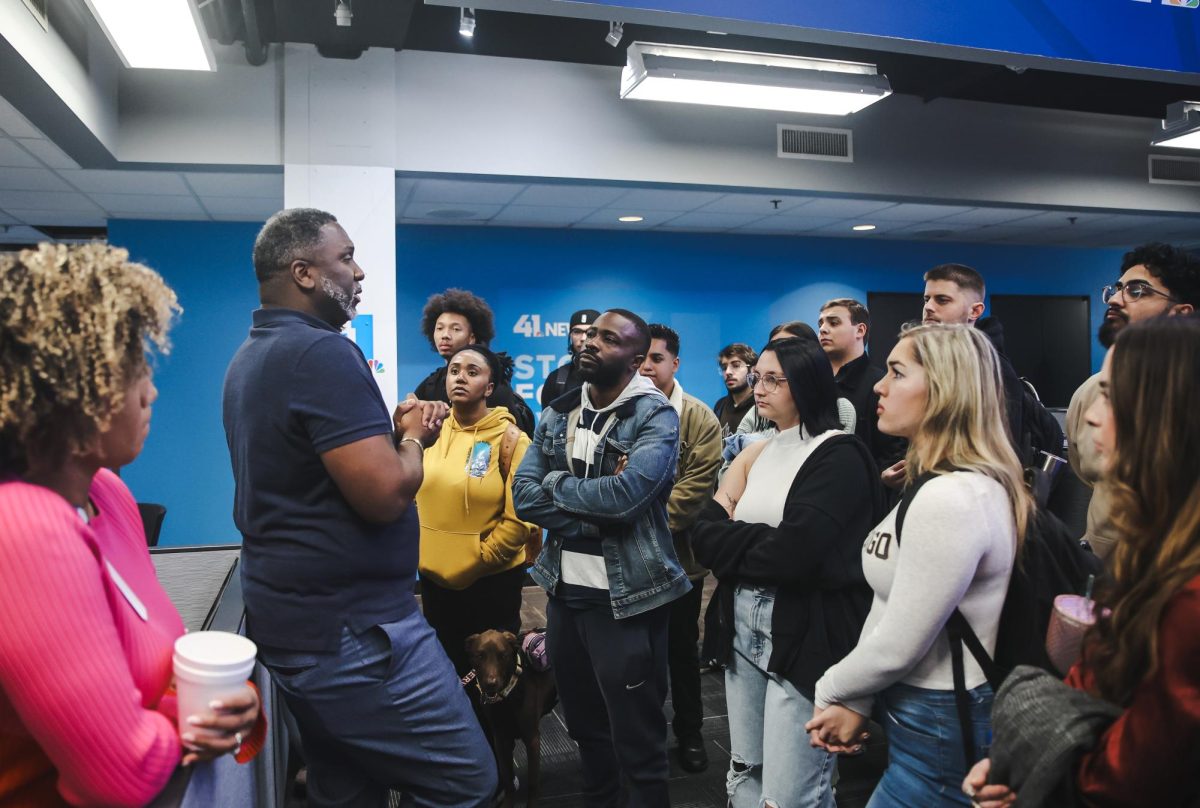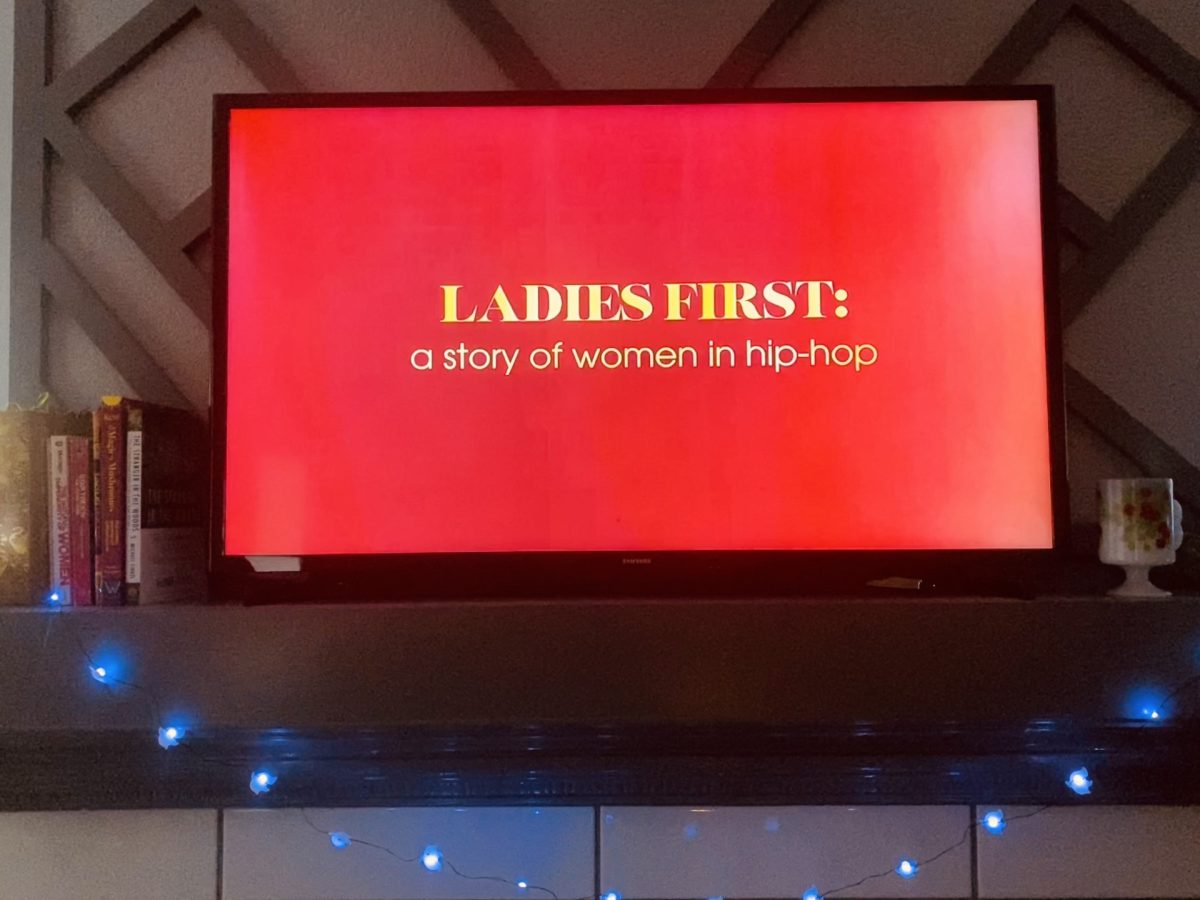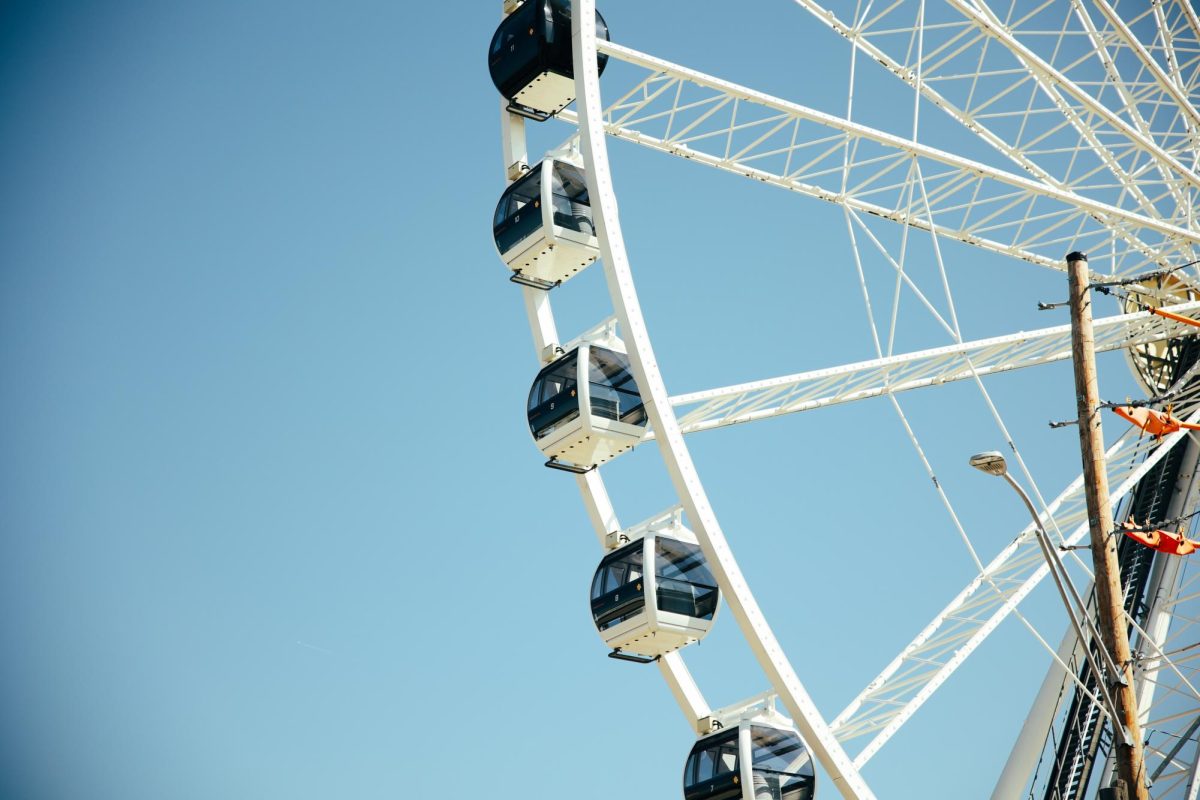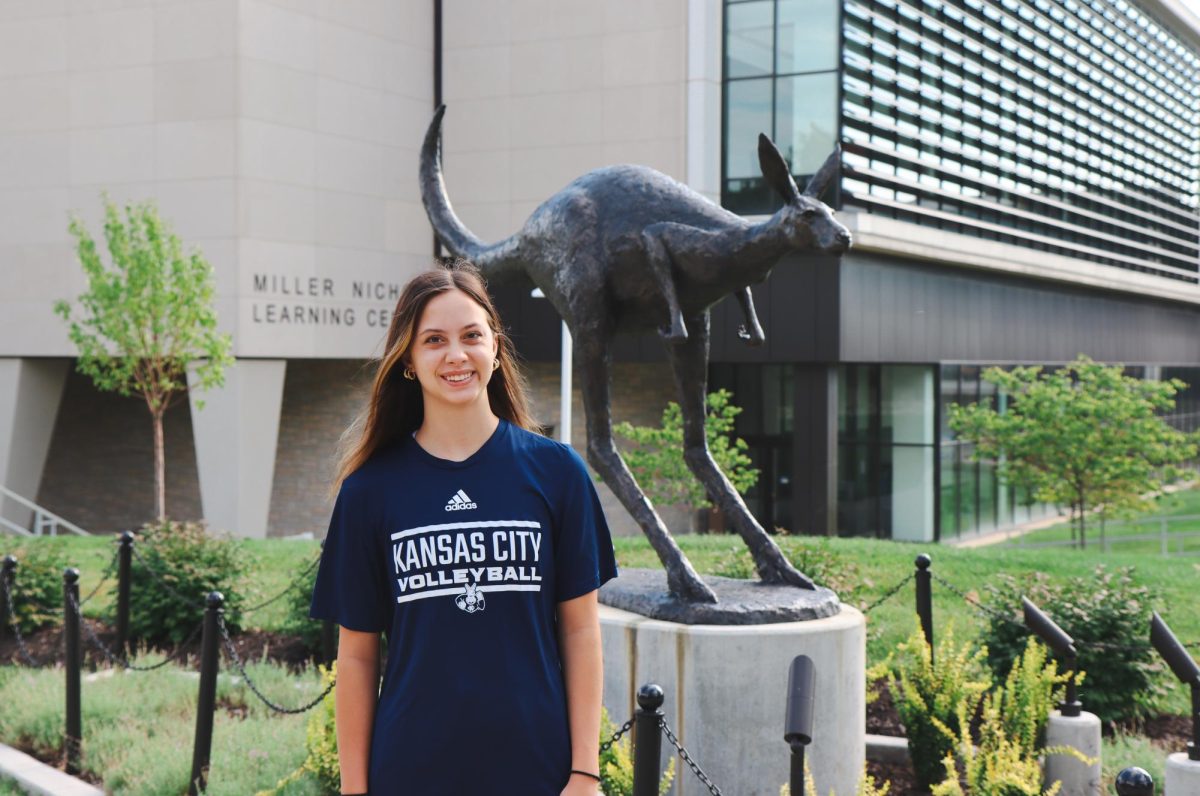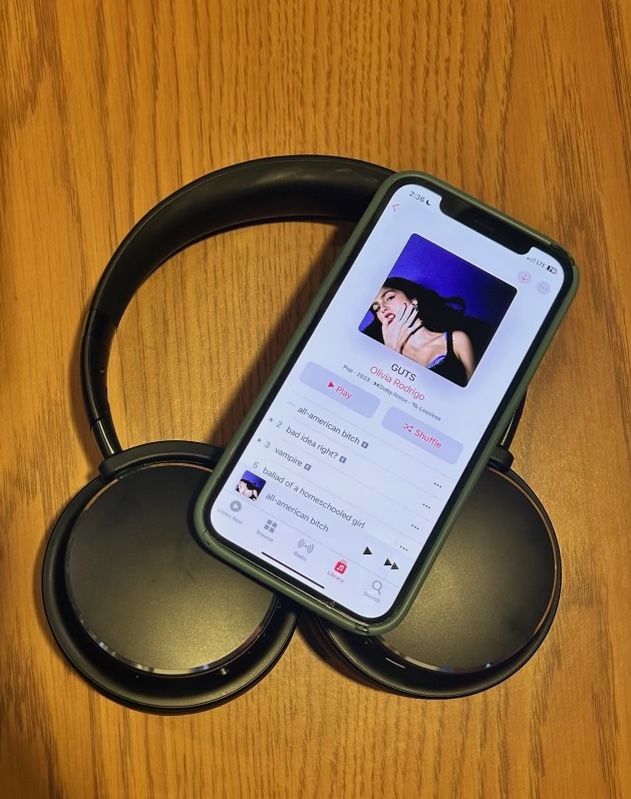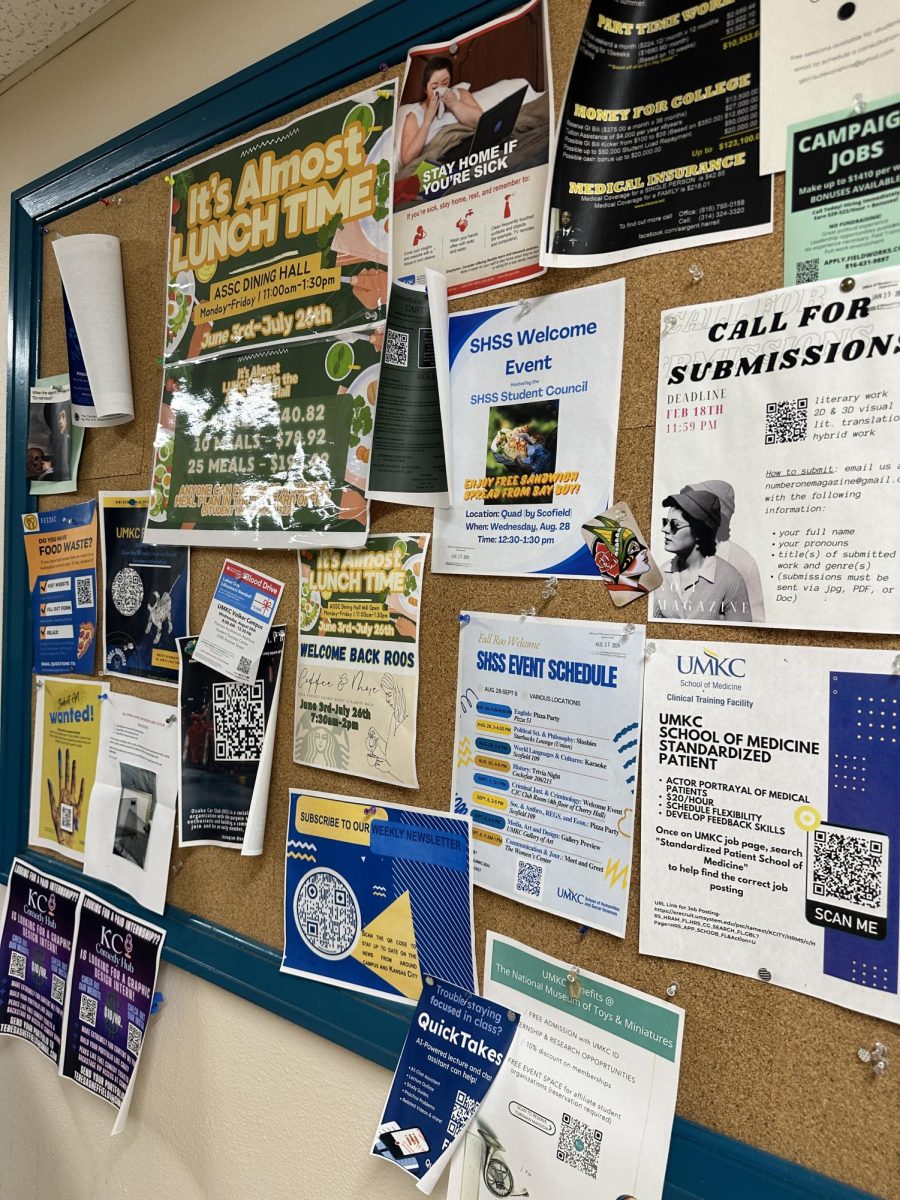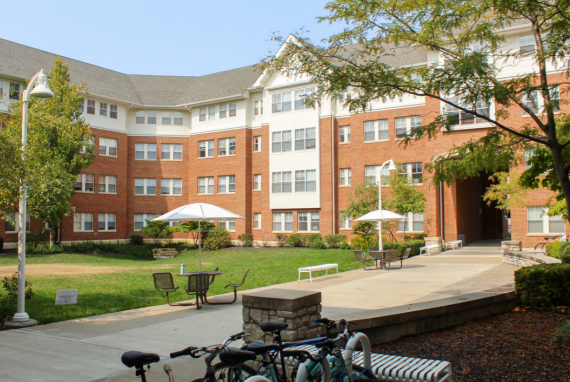In April of this year, right before the end of the spring semester, I submitted a piece to UNews about archiving the year. I wrote about a project my sister is doing, where she essentially keeps a journal of embroidery doodles on a massive embroidery hoop, one for each day of the year. I wrote about how the project had gone from being full of happy last-semester-of-senior-year doodles to doodles about the devastation of not getting to do all the normal, end-of-high-school activities.
The piece didn’t end up getting published, but part of me is glad. It’s funny how I wrote about inadvertently documenting the changes happening this year, and somehow I didn’t expect more changes to be coming. I guess we could say hindsight is 2020, but too many people have already made that joke.
Just a month or so after writing that piece, on May 25, George Floyd was murdered by police officers in Minneapolis. A day later, protests erupted across the country, kicking off in Kansas City on Friday, May 29. Suddenly, my sister’s project documented another change, this one in both the national atmosphere surrounding issues of racism and our family’s own relationship with racism.
The point of my original piece still stands. Art is essential to archiving, ranging from the art of writing, my personal favorite weapon, to the art of embroidery. No matter where we stand 20 years from now, no matter how much, God willing, our country has improved, we will have these pieces to remind us of what went down. We will have these pieces to remind us what we, individually and communally, did or didn’t do to usher in change.
On Friday, Sept. 4, I went to the March on Kansas City, notebook in purse, and very quickly notebook in hand. I wanted to remember what happened in the march, what the energy was like, and what those local leaders of the movement said.
Art is, in some ways, fact. Art as documentation can confront mistruths, so prevalent on platforms such as Facebook and Twitter, with the visible and rationally undeniable facts of the situation. These facts battle white supremacy, in both allies and enemies.
I hope that this piece serves that purpose. When I tell you that the atmosphere was eager, and anticipatory, I mean it. The drumline from Broadway Drill Team provided a soundtrack, carrying the march down the street and providing a beat behind our chants. The dancers lead them, moving with an infectious purpose. Lawyer and movement leader Stacey Shaw led us in chants, calling for justice now. I’ll never forget the feeling of chanting, “I do!” In response to the question “Who’s got bail money?” as the drums continued in front of us.
When I tell you that the environment between marchers was caring, I mean it. People passed out signs for free to those who didn’t have them. I declined in order to keep my hands free to write. A tall man opened his backpack during a break, passing around mini water bottles to fellow protesters while we stood enraptured by the talented young people dancing and drumming all the way down Main to the Liberty Memorial. In a protest, you stop being strangers and become partners. Everyone wears a mask, because not to would be waging war against your own purpose.
When I tell you that the march was a celebration of the potential of our country’s future, I mean it. “You are holding power for all of the people who couldn’t make it here today,” Stacey Shaw declared through a megaphone. “You are sharing power into your children and generations who haven’t gotten here yet.”
One small but mighty dancer took to the front of the drill team as a photographer crouched in front of her, documenting brilliance.
Everywhere there were photographers and videographers, fellow archivists in the fight for information. All the way down the street, they ran ahead of the crowd, let themselves be swallowed by us, and ran out in front again. From the inside, I scribbled notes. My heart broke when one of the leaders shouted, “Say his name!” through a megaphone only to be met with silence. There are too many names, too many possible answers to the call. From then on, they began name first, clarifying that the chant was in honor of Cameron Lamb, or Ryan Stokes, or Donnie Sanders, or Terrance Bridges, or Breonna Hill, or or or.
Maybe in 20 years, or possibly next week, someone will be able to read this piece, look at those photographs, and put together the beauty and pain that was the march. Artists must take up the call if we want history to be remembered. No one else will.
On Sept. 5th, I went to see one of the six Black Lives Matter murals being painted on Kansas City streets, at 63rd and Brookside, just a handful of blocks south of Volker campus. The painting was well underway, the volunteers sweltering under the hot and humid sun. I once again noticed photographers and videographers around, all memorializing the art in front of us.
The Kansas City Black Lives Matter murals are the epitome of public art. They are painted on the street, available to everyone to walk by and see. They are painted in wealthier areas like Brookside and the intersection of Northwest Briarcliff Parkway and North Mulberry Dr, near the Village at Briarcliff, but they are also painted in a couple places on Troost, the infamous Kansas City colorline (and consequently, socioeconomic divider). One is painted at 10th and Baltimore near the public library downtown, the other at 18th and Vine, a fabulous intersection full of rich musical legacy and a great museum.
Unlike street murals in other cities, like New York or D.C., the murals are not just yellow block letters. The mural painting I witnessed, in Brookside, was meticulously planned by artist Vivian Wilson Bluett, each letter symbolic of a part of the Black Lives Matter movement. The L in “Black” honored the names of victims of police brutality, including Ryan Stokes, Sandra Bland, and Breonna Taylor. The C showcased a cartoon portrait of a woman with a beautiful, large afro and a green speech bubble yet to be filled in. The K depicted a human lung, the words “I can’t breathe” above and below it.
The paintings are their own archive. The murals are a record of what the city felt like, through the images and colors, during this time. The murals are evidence that people cared.
These murals are public masterpieces, but their biggest virtue also puts them in danger. As has been witnessed in St. Louis and other mural locations across the country, the publicity of the murals subjects them to vandalism by disgruntled people who don’t believe that Black lives are included in the category “all.” It is not unthinkable that similar vandalism will occur here in Kansas City.
We will always, however, have the photographs and articles about the murals, thanks to the videographers with drones, who provide us with overhead shots of the completed murals. To the photographers who capture the faces of the volunteers working so hard to make this public artwork a reality, granting them deserved recognition. To any of the others, making these revolutionaries art, and making them history, and sharing them to all the people who didn’t make it there that day.
Art as archive, as documentation that these things really happened, is valuable. George Floyd was murdered, and he has been honored on buildings donning his portrait across the country. Protests happened, and photographers were there to show hundreds of different perspectives on the same event, all pieces of the picture. Public art was created, and videos were taken, proving that they existed, even if only for a while.
Of course, the revolution wouldn’t happen, the facts wouldn’t exist, without those leading the fight. The revolution is owed to leaders like Stacey Shaw, who take up the call and lead protests. To KC Art on the Block, who planned a massive masterpiece of city-wide mural painting. To all the others, who other artists have named in other works.
My sister’s daily embroidery doodles include the word “resist” and the raised fist of the Black Lives Matter movement. Through her art, my sister shares her voice. She uses her power to advocate for the movement. Who knows what young relative will find the embroidery in however many years and look up what it means. What they will find is an archive of thousands more artworks, all documenting the world in revolution.
I hope that child’s world is better than this one.
knwhf2@mail.umkc.edu


